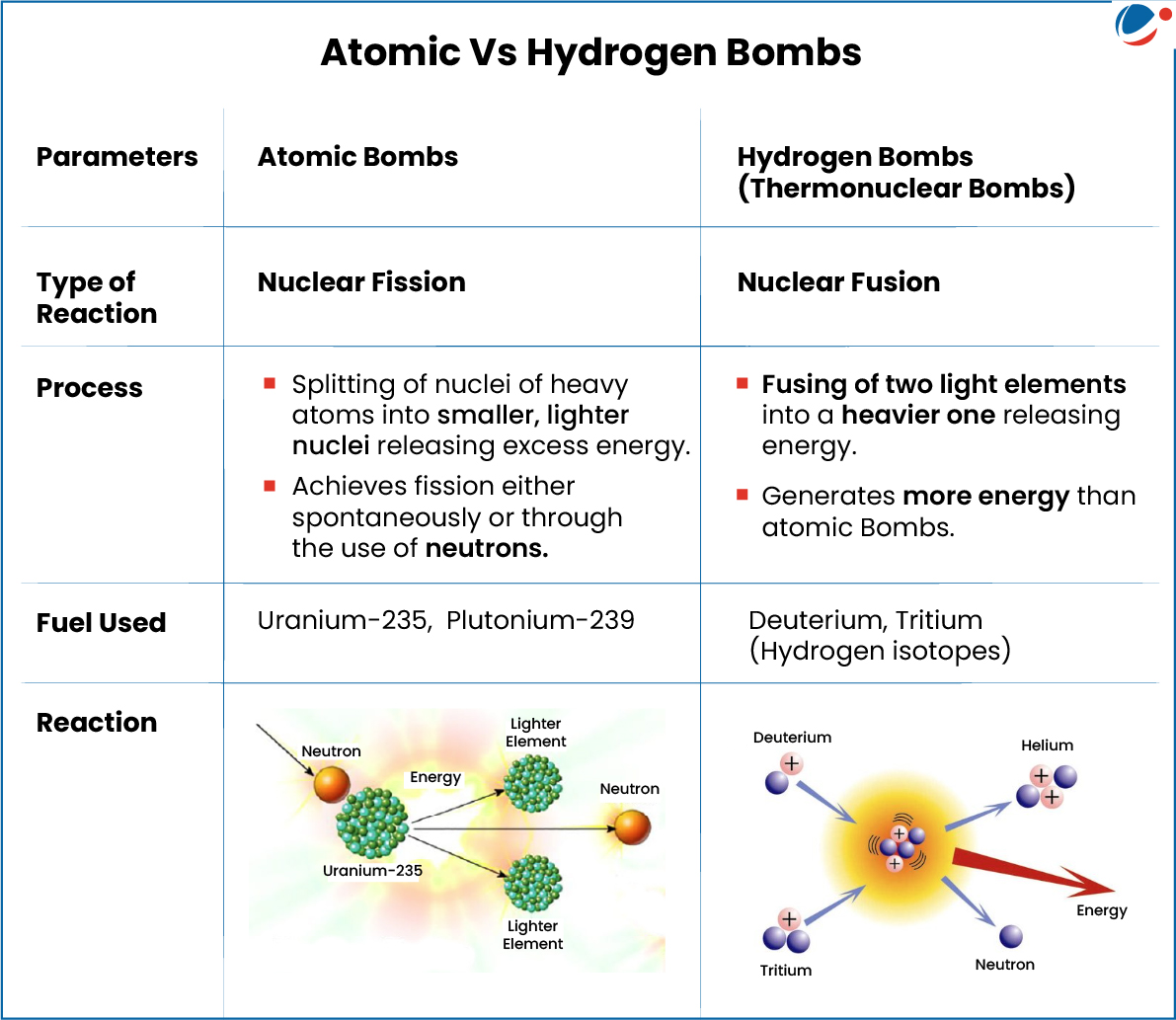Different from the traditional atomic and hydrogen bombs, the 2-kg device reached temperatures exceeding 1,000 degrees Celsius marking a major step in the development and use of future weapons.
Key Features of the Non-Nuclear Hydrogen Bomb
- Chemical Reaction: It deploys chemical reaction with Magnesium Hydride to create a powerful explosion without nuclear materials.
- Hydrogen bomb, on the other hand, is primarily based on the nuclear fusion process.
- Uses Magnesium Hydride: Unlike Hydrogen bombs that uses radioactive hydrogen isotopes like deuterium or tritium as fuel.
- Magnesium Hydride is a silvery powder that acts as a solid-state hydrogen storage material.
- When ignited it releases hydrogen that rapidly mixes with air and on reaching explosive limits, the gas ignites creating a self-sustaining combustion cycle.
- Scale of Damage: Generates only about 40% of Trinitrotoluene’s blast force, but demonstrates greater thermal damage radius with heat output enough to melt materials such as aluminium alloys.
- It requires minimal ignition energy and has the ability to generate intense, sustained heat without producing radiations.




